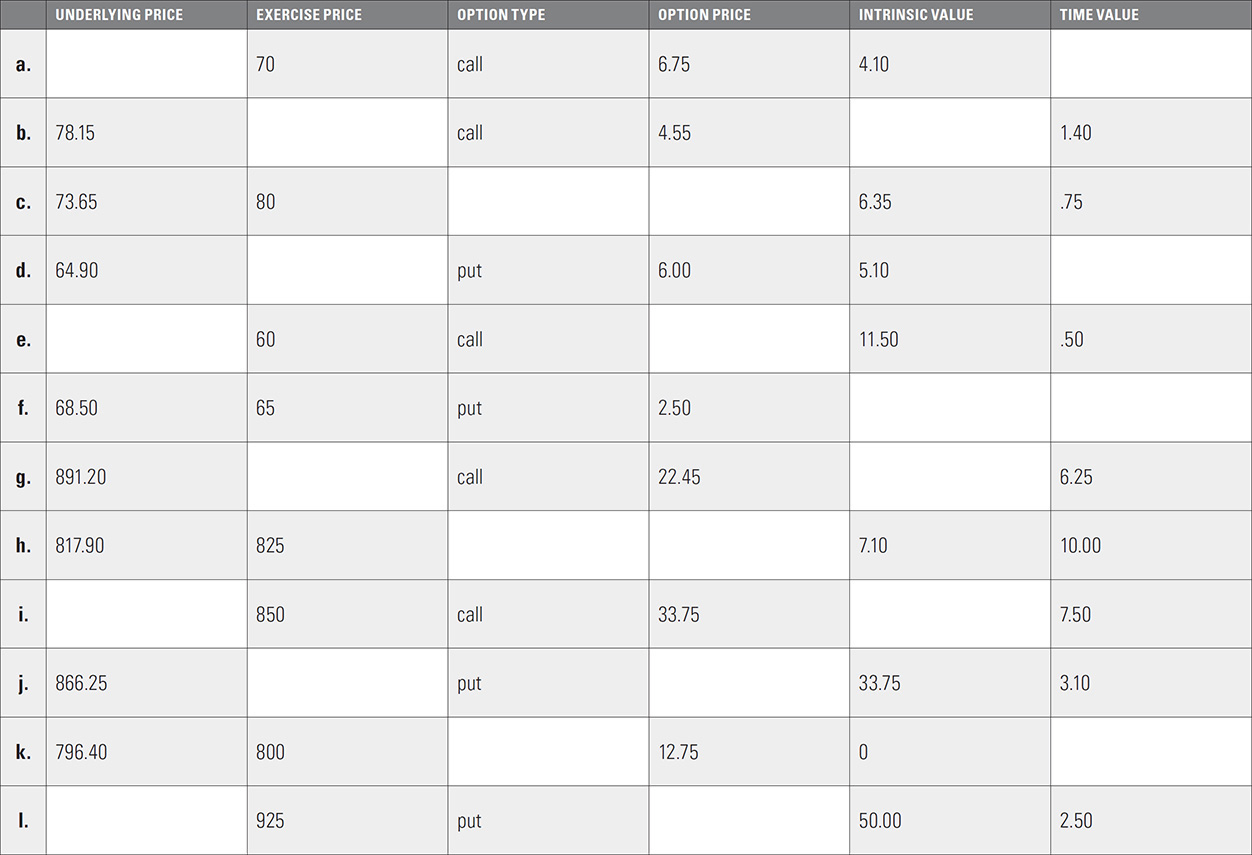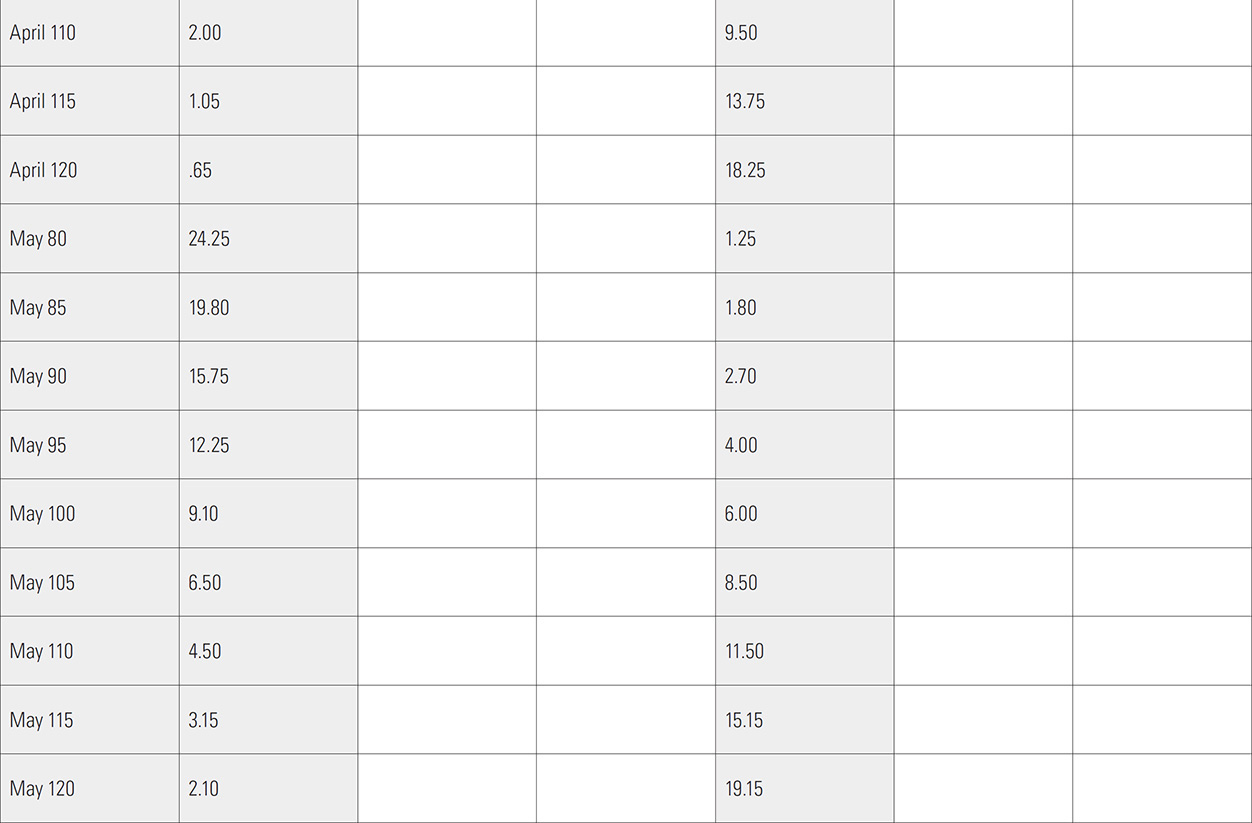| CHAPTER 3 |
Contract Specifications and Terminology
1. When a stock option is exercised, regardless of the current stock price, the underlying stock is bought or sold at a price equal to the exercise price.
If the underlying contract is 100 shares of stock, what is the stock position (+ for long, – for short) and cash flow (+ for a credit, – for a debit) resulting from each of the following actions?

2. If the underlying contract is 100 shares of stock, what will be your total stock position and cash flow if all of the following occur?

3. When an option on a futures contract is exercised, the underlying futures contract is bought or sold at the exercise price, and the position is immediately subject to futures-type settlement. Consequently there will be an immediate variation credit or debit equal to the difference between the current futures price and the exercise price.
If the underlying is a futures contract, what is the futures position (+ for long, – for short) and cash flow (+ for a credit, – for a debit) resulting from each of the following actions?

4. For futures options, when there is no listed futures month with the same month designation as the option expiration month, the underlying futures contract for the option is the nearest listed futures month beyond the option expiration month.
Suppose underlying futures contracts are listed for March, June, September, and December. What will be the futures position resulting from each of the following actions?

e. With the same four listed futures months (March, June, September, December), March futures are trading at 1,378.90 and June futures are trading at 1,384.60. If each point has a value of 200, what will be your total futures position and cash flow if all of the following occur?

5. When an option on a cash index is exercised, no underlying position results. But there is a cash payment equal to the difference between the exercise price and the current index price.
If the underlying is a cash index, what is the underlying position (+ for long, – for short) and cash flow (+ for a credit, – for a debit) resulting from each of the following actions?

6. An option’s price is always made up specifically of its intrinsic value and time value, where call intrinsic value = maximum of [0, underlying price – exercise price] put intrinsic value = maximum of [0, exercise price – underlying price]
For each option price and underlying price below, what is the intrinsic value and time value?


7. The type of option is either a call or a put. For each option below, fill in the missing value or option type.

8. An option is in-the-money if intrinsic value > 0.
An option is out-of-the-money if intrinsic value ≤ 0.
An option is at-the-money if exercise price = current underlying price (a special case of out-of-the-money).
For each option and underlying price below, is the option in-the-money or out-of-the-money, and by how much?

9. Options are currently listed for trading at the following exercise prices.
45, 50, 55, 60, 65, 70, 75
At the underlying prices below, which call and put is closest to at-the-money? Which calls and puts are in-the-money?

9. Options are currently listed for trading at the following exercise prices.
10. At an underlying price of 101.90, what is the intrinsic value and time value for calls and puts at each of the following expiration months and exercise prices?


From your answers in the table which option—in-the-money, at-the-money, or out-of-the-money—carries the greatest amount of time value?
Which option—in-the-money, at-the-money, or out-of-the-money—carries the least amount of time value?
